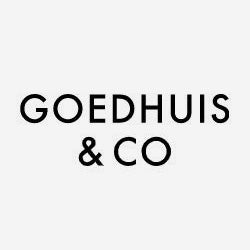
The first half of the year has seen the Bordeaux market remain a relative haven of calm. This despite some testing conditions in the global economy and the softening of top end wine prices in other regions. With the 2018 En Primeur campaign now well underway and attention firmly fixed on Bordeaux, we look at the current situation and where the opportunities may lie.

The Liv-ex Bordeaux 500 is Liv-ex’s most comprehensive index for Bordeaux wines. It represents the price movement of 500 leading wines from the region and is calculated monthly using the Liv-ex Mid Price. The index comprises six sub-indices: the Fine Wine 50, the Right Bank 50, the Second Wine 50, the Sauternes 50, the Right Bank 100 and the Left Bank 200.
Looking Back
At the end of April, the Liv-ex 100 finished at 309, flat on the previous month and a down a mere one percent year on year. Going back another year and the story was not much different, April 2017 saw the index close at 303. However, a clearer picture becomes apparent if one looks further back, across the ten months from the end of June 2016 to April 2017 the index rose 16.5%. The Brexit vote on the 23rd June 2016 saw sterling lose 10% against the dollar and 7% against the euro overnight and overseas buyers took full advantage. From June 2016 to December 2017, the index rose 20%. After such a dramatic surge, it is perhaps not surprising that the index ran flat over the course of 2018, finishing the year where it started at 312.
The reasons for the lack of volatility can be split between steadier exchange rates during the period and that the index is weighted towards Bordeaux wines (65%). Whilst other regions have posted healthy returns, Burgundy in particular, Bordeaux prices have held steady. This latter point compounded by buyers’ interests moving away from Bordeaux towards other regions. As mentioned in previous reports Burgundy has enjoyed a remarkable run with various producers’ wines reaching eye-watering levels; DRC and Rousseau in particular. Italian wines too, have seen a marked increase in interest particularly the Tuscan estates of Sassicaia and Ornellaia, equally the wines of Piedmont; Barolo and Barbaresco are making an impression on the market.
Recent Vintages
Despite its market share coming under pressure from other regions, there are still compelling reasons to purchase wines on release. Those chateaux that release en primeur at well-judged prices, in relation to the quality of the vintage itself, offer an opportunity for the buyer. If we look at a snap shot of wines from the two most recent physical vintages the trend becomes clear.

2014 is a high-quality vintage, that produced wines of charm and substance and crucially many were released at a fair price. These wines were not only astute buys at release, they remain good buys now as they compare favourably with their peers.
2015 is a great vintage, the wines rightly sit in the very top echelon. Whilst prices increased from the previous year, many wines still offered value en primeur. Furthermore, bearing in mind the tremendous quality of the vintage they still offer value to the buyer now.
2018 Bordeaux
You can see David Roberts MW’s full vintage report here, but the long and short of it is that, despite a challenging growing season, the 2018s are some of the most exciting reds Bordeaux has ever produced.
Nearly two months into the campaign, there have been a number of notable releases which have kept clients on their toes. Beychevelle, Calon Segur, La Clotte, Les Carmes Haut Brion, Palmer, Rauzan Segla and Canon have all sold out. Clearly, when the release price is right, this is a vintage which requires decisive action. A second tier of wines which offer exceptional quality for the price, such as Branaire Ducru, Leoville Barton and Domaine de Chevalier, have sold strongly, but are still available. And finally, there are some excellent bargains to be had at the entry level; Meyney, Gloria, Potensac and Les Cruzelles have all produced wonderful wines. The common dominator to all these wines success is fair pricing in relation to their quality. To that end, those that have released below the current price of their 2016s have found favour.
Now that Vinexpo has come and gone, and whilst a few bigger names have come out, many cru classé chateaux are still to release, including the First Growths, Super Seconds and their Right Bank peers. The campaign can unquestionably be a great success if the lead of some of the early releases is followed: the quality is beyond question, as ever the question is price.
Where next?
The 2017 wines will be delivered later in the year, at the same time critics will release their in-bottle scores.
Whilst there is the occasional, notable amendment for the most part there is little deviation outside the barrel score range. Those wines that have scored highly at en primeur tend to score highly when physically released and here lies the opportunity.
In a vintage like 2017, which suffered its share of challenges, quality is less homogenous but there are some outstanding wines. Mouton Rothschild (97-99pts), Lafite Rothschild (97-99pts), Vieux Chateau Certan (96-98pts), La Conseillante (95-97pts) produced wines that transcend the vintage. Should these wines settle within the spread of their in-barrel scores, those who bought at opening price may well be smiling come the critics’ reviews.

 Written By
Written By